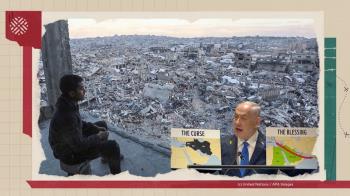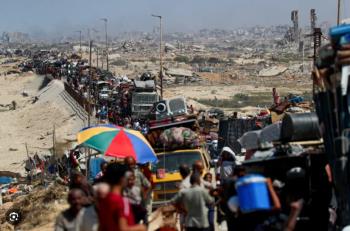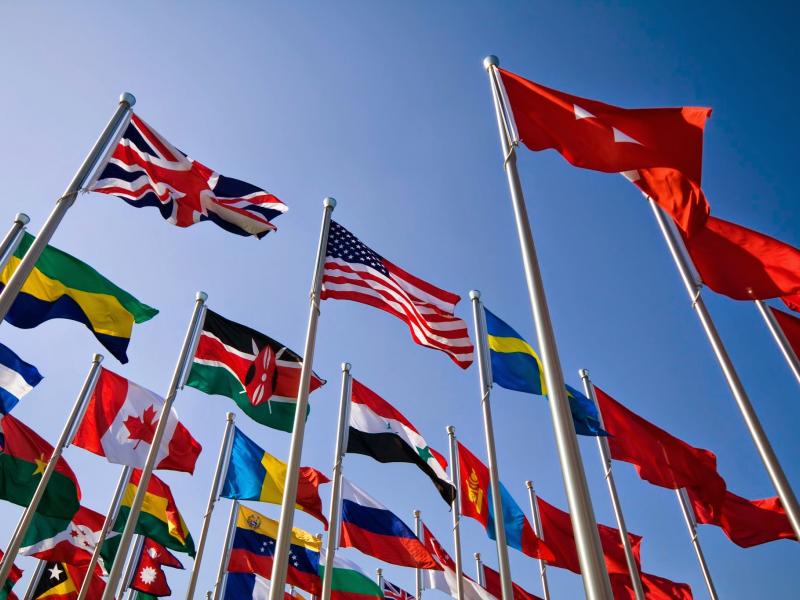Alwaght- The United States of America has built its foreign policy on the basis of interests. But while these interests may be the foundation for its foreign policy strategies they do not suffice to construct the ultimate edifice. Cementing relations with regional or international governments on the one hand, and hammering down others on the second hand, are two different approaches the US has employed to establish the groundwork for its interest-based policies.
Building interests
The first tactic is used with allies through whom either threats or treats under the reinforcement and punishment system are issued. For example, providing economic aid for a country whose economy is faltering in exchange for certain deals.
The second approach is used against governments who refuse to comply with Washington’s demands and reject its hegemonic policies.
Destroying Nations
With these countries, the US brings out the hammer. Like taking down a column because it does not support the building, the US has taken to attempt to topple governments which it perceives as useless or in better words go against its interests. Pinpointing the target, labelling it as an enemy, and destroying it from within seems to be Washington’s favorite method due to its minimal effects such as avoiding direct confrontation and lowering the cost of war.
Triggering crises and then suggesting proposals to resolve these crises can be compared to setting countries on fire and then offering to extinguish them.
In the name of democracy as well as battling terrorism, for example the US has launched attacks against Afghanistan, Iraq, Yemen, and Libya.
On September 11, 2001 following the attacks on the twin towers in New York City, the Bush administration launched the “Global War on Terrorism.”
Washington and NATO then used this as an excuse to invade Afghanistan saying that it constituted an undeclared “armed attack” and the laws of war entailed that they strike back, namely against al-Qaeda, the emerging face of terrorism back then.
In this respect, the US also challenged the Taliban government in Kabul promoting democracy as a key objective of the military intervention.
A report this year found that the US-led war in Afghanistan killed 220,000 people, 80,000 in Pakistan, and an appalling 1 million in Iraq
The International Physicians for the Prevention of Nuclear War and other groups estimated that the so-called war on terror claimed the lives of 1.3 million people.
“Not included in this figure are further war zones such as Yemen. The figure is approximately 10 times greater than that of which the public, experts and decision makers are aware. ... And this is only a conservative estimate," the investigators wrote.
The Syria Model
The White House has had its eyes on Damascus for quite some time. In 2011, when the so-called Arab Spring spread from Tunisia across the Arab world, Washington saw an opportunity it would not have missed.
Stepping into the scene overtly, and working with militants covertly, the US supported the so-called moderate rebels in Syria whose various groups eventually merged with extremists such as ISIS and Jabhat Fateh al-Sham (al-Nusra Front). It set President Bashar Assad’s removal as a condition for the end of the bloody war even after he secured a majority in the last elections.
It claimed that Assad’s brutal fight against terrorist groups is the reason for their expansion when in fact Washington, Saudi Arabia, and Qatar were funding and aiding the militants.
"We are going to continue to innovate, to build up what works," Said Defense Secretary Ash Carter referring to the readjustments the US has made to its military campaign in Syria and Iraq.
What works for whom, is the subject at question. By removing Assad, installing a so-called democracy, a model which we have seen crumble in US-appointed governments such as Afghanistan, and ordaining a puppet president, the Syrian Arab Republic as we know it would weaken.
Syria has been a main part of the Resistance axis, comprising Iran and Hezbollah, and has been acting as the link between the two in the ongoing fight against the Israeli occupation. If Assad were to be ousted, the US and its allies believe it would mean the link binding the Resistance Axis would be snapped off; thereby, serving Israeli national security.
The Israeli Ambassador to Washington Michael Oren told the Jerusalem Post last month that Tel Aviv would rather have al-Qaeda defeat Damascus than keep the Iran-backed government in power.
"The greatest danger to Israel is by the strategic arc that extends from Tehran, to Damascus to Beirut. And we saw the Assad regime as the keystone in that arc,” he said.
Double Standards
The US claims it is seeking to install a democracy in Syria while it continues to turn a blind eye to suppressive regimes like that of the al-Khalifa and al-Saud royal families in Bahrain and Saudi Arabia respectively.
Both Manama and Riyadh have been accused of breaching international law and human rights violations.
Human rights watch has criticized the Bahraini regime saying its “courts convict and imprison peaceful dissenters and have failed to hold officials accountable for torture and other serious rights violations.”
According to HRW, the reign of deceased Saudi King brought about "marginal advances for women, but failed to secure the fundamental rights of Saudi citizens to free expression, association, and assembly."
However, since the US is closely allied with these oil-rich countries and indeed needs these regimes in power to secure its geopolitical interests in the Persian Gulf, Washington has adopted the silence policy toward the Bahraini and Saudi’s atrocities.
Domino Effect
If the US succeeds in toppling Assad’s government then other countries should be worried. If Washington and its allies get ahead in this race for survival and oust Assad’s resilient government, neighboring countries will have much reason to fear they will be next. Iraq and Turkey would have no chance in the face of this western supremacy.
Even Washington’s allies will have a piece of this cake as the Americans wouldn’t hesitate to slice the region into portions especially oil-rich countries.
Governments in the West Asia and North Africa will fall, one following the other, like pieces of a domino game.
Syria, among other forces, is the pillar of West Asia. If Syria falls, there is a great chance that the region would collapse. The destruction we see today within Syria is just a concrete glimpse of the manifestation of the ruin the region might witness on the existential level if the US policies of destroying nations to build its own interests are not thwarted.



























